
A MULTIPLE ARCHITECTURE REVEALING THE CULTURAL AND NATURAL FILIPINO HERITAGE
In the heart of East Asia, Cebu, in Cebuano Sugbo,is one of the largest islands in the Philippines. The eponymous capital of the Visayas province – Cebu City – is the oldest city in the archipelago. It was the first Spanish colony and was previously discovered by Portuguese explorer Fernando de Magellan in 1521. Cebu City is now the main maritime shipping port and the main economic business center specializing in the New Information and Communication Technologies (NICT) sectors.
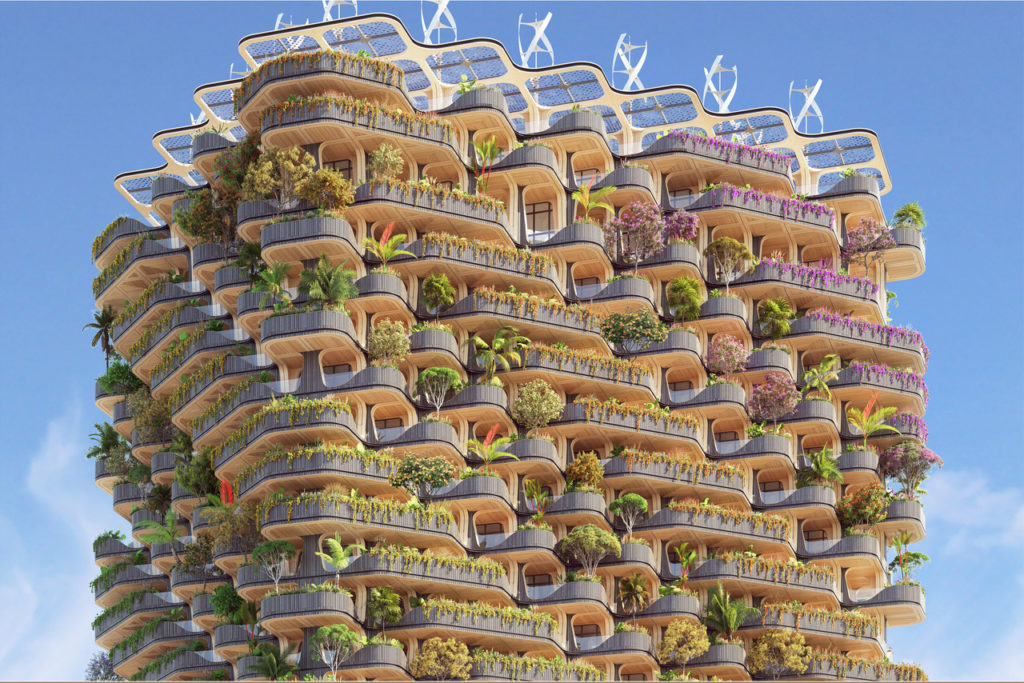
The project is located inside the 50 hectare Cebu Business Park at the corner of Samar Loop and Avenue Cardinal Rosales. The objective is to construct a residential building with double environmental certification (LEED + BERDE) which offers the perfect balance between mixed cultural heritage and natural heritage of unparalleled splendor.
Looking for radical solutions to reduce the global carbon footprint, Vincent Callebaut Architecture has designed a 32-story, 115-meter high tower built of solid wood, as it is theonly natural, abundant, and renewable material. This organic tower integrates the principles of passive bioclimatism and advanced renewable energies. It was named “The Rainbow Tree” because it is an ode to Eucalyptus Deglupta, also known as Rainbow Eucalyptus, an iconic and colorful tree from the Philippines.
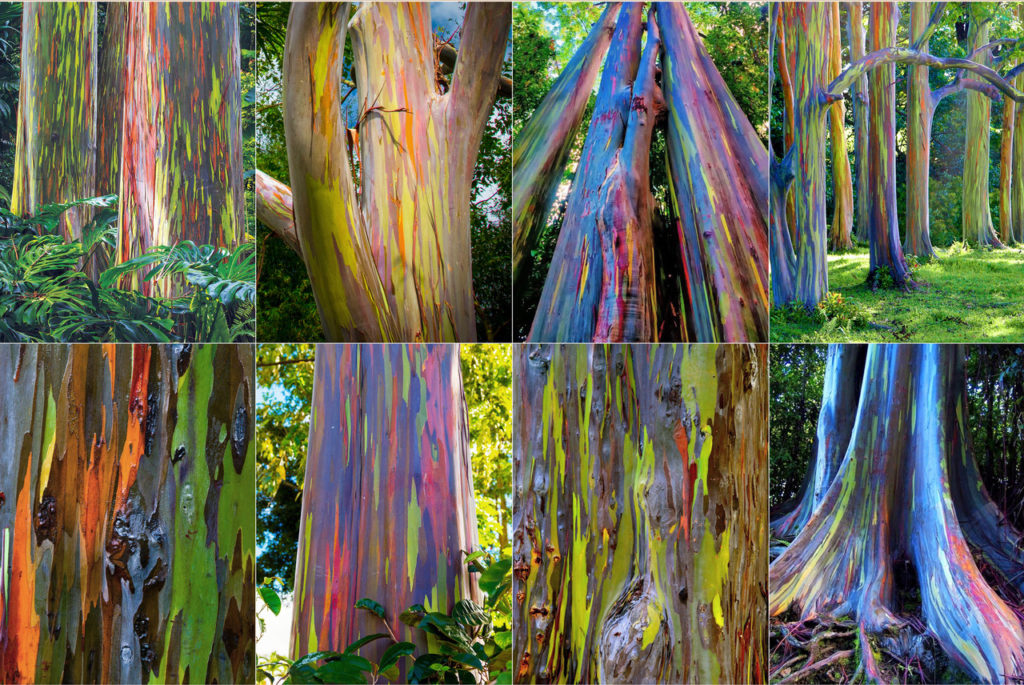
“The Rainbow Tree” tower is adorned with the most beautiful plant essences from the neighboring tropical forests. This luxuriant dress of more than 30,000 plants, shrubs, and tropical trees draws a flourishing spiral in the colors of the rainbow and brings a breath of freshness to the heart of Cebu Business Park which is mainly built of concrete and steel.
A MODULAR MASS TIMBER TOWER INSPIRED BY TRADITIONAL “BAHAY KUBO” HOMES
The Rainbow Tree is a staggered geometric stack of 1,200 modules, each with sides measuring 4 meters sides and a height varying between 3.2 to 4.8 meters. All these mass timber modules are prefabricated and standardized in a factory with a very high degree of precision. They are directly inspired by the “BahayKubo” (literally, cubic houses, also known as “Nipa Huts”).

These indigenous nomadic houses were made of natural materials from the forest such as wood, bamboo, and palm leaves. Before the arrival of the Spanish colonizers with their stone-base constructions, this traditional Filipino rural house originally rested on stilts and was anchored to the trunk of trees near the rice fields, coconut palms, and orchards.
These bio-based “Bahay Kubo” breathe! They are in symbiosis with nature. Their architectural identity reveals that they are based on ventilation, large open interior spaces, and terrace networks adapted to the tropical climate. These three foundations are the basis of our architectural concept for building a CLT (Cross Laminated Timber) tower.
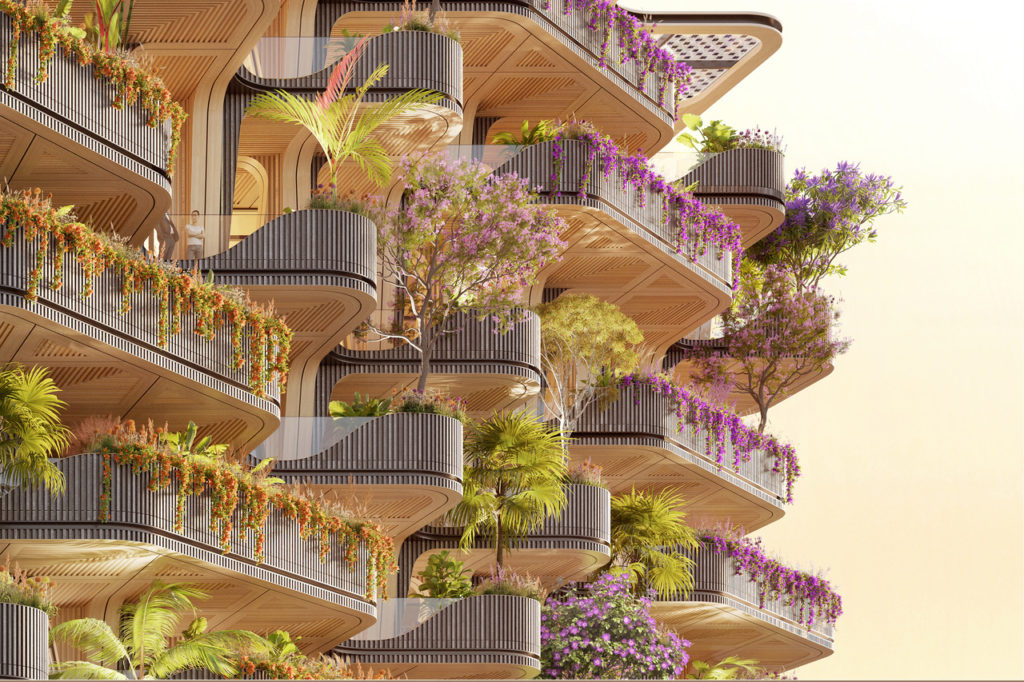
Invented in the 1990s in Austria and Germany, this construction technique consists of superimposing perpendicularly wooden slats and connecting them together using structural, now-organic adhesives such as tannins, lignin, cellulose, or even starch.
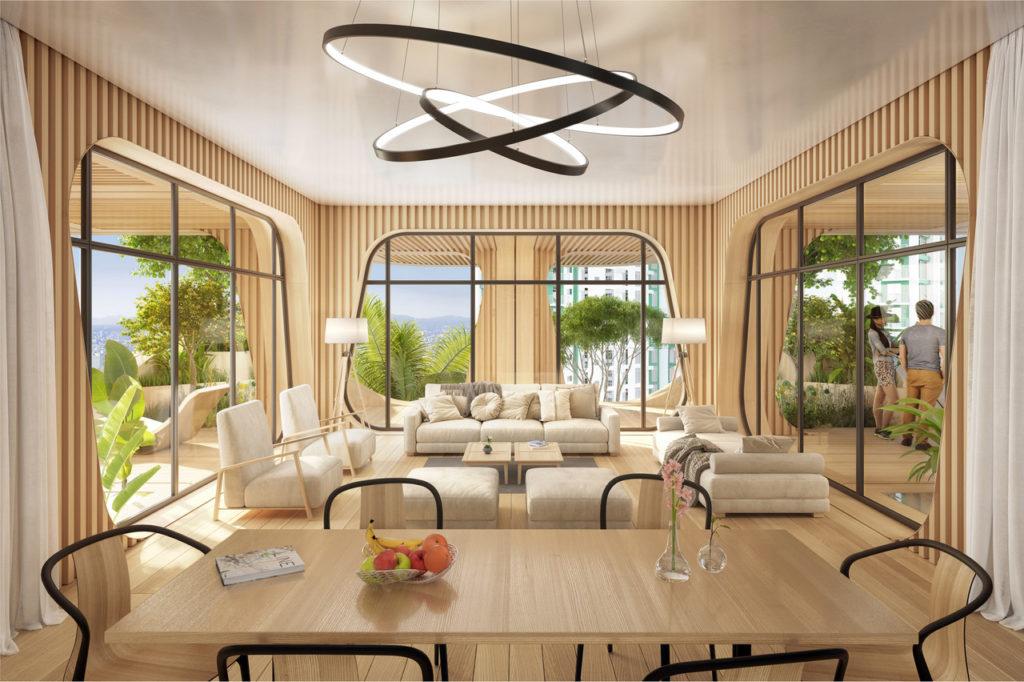
The Cross Laminated Timber manufacturing process requires much less energy than concrete or steel, and moreover it does not generate greenhouse gases. As a reminder, producing 1 ton of concrete generates 2.42 tonsof CO2 and producing 1 ton of steel generates 0.938 ton ofCO2.
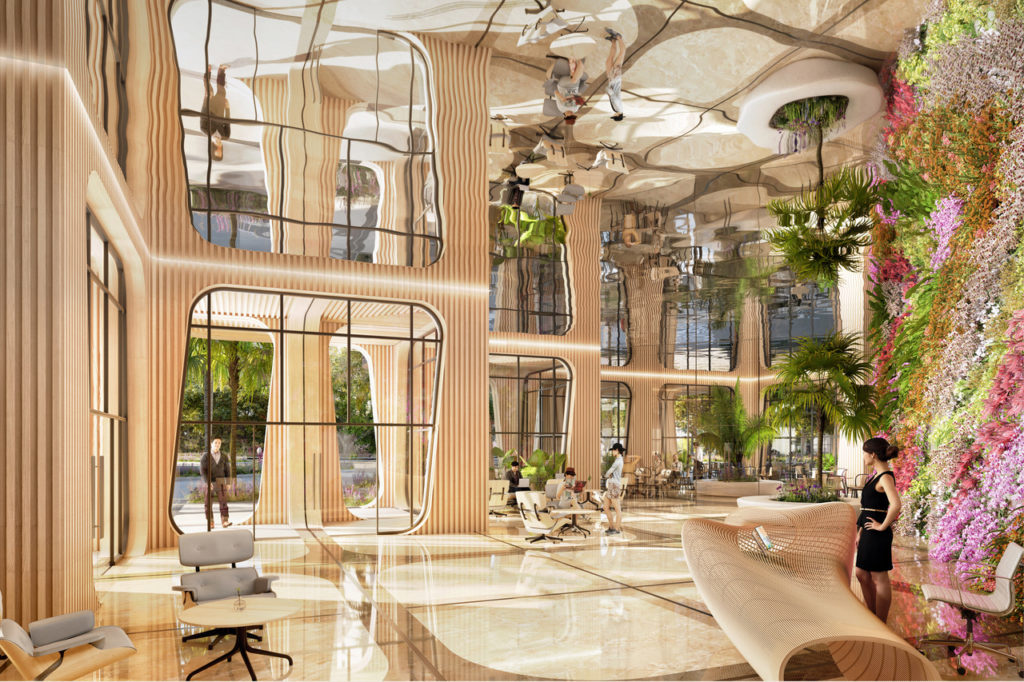
In terms of fire resistance, remember that wood burns slowly, does not release toxic fumes, and transmits heat 250 times slower than melting steel and 10 times slower than concrete which cracks under the effects of the flames.
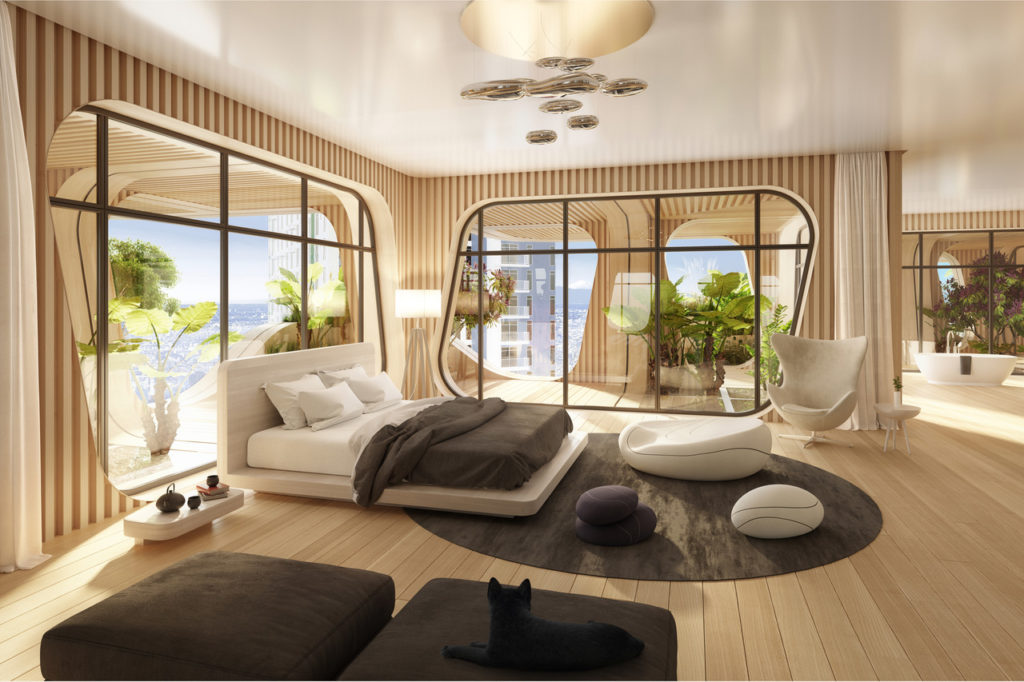
Being built from trees cut and harvested in short circuits in the archipelago in the heart of eco-responsible forests – where a cut tree is equal to a replanted tree – means that the Rainbow Tree is a real carbon sequestration well. In fact, during the growth of trees through natural photosynthesis, the stored carbon is found “trapped” in solid wood and is therefore not released into the atmosphere. For 1 ton of wood produced, about 0.9 tonnes of carbon is confined.
This means we are talking about a building with a negative carbon footprint!
MULTI-COLORED, CARBO-ABSORBING, AND DEPOLLUTING BALCONIES
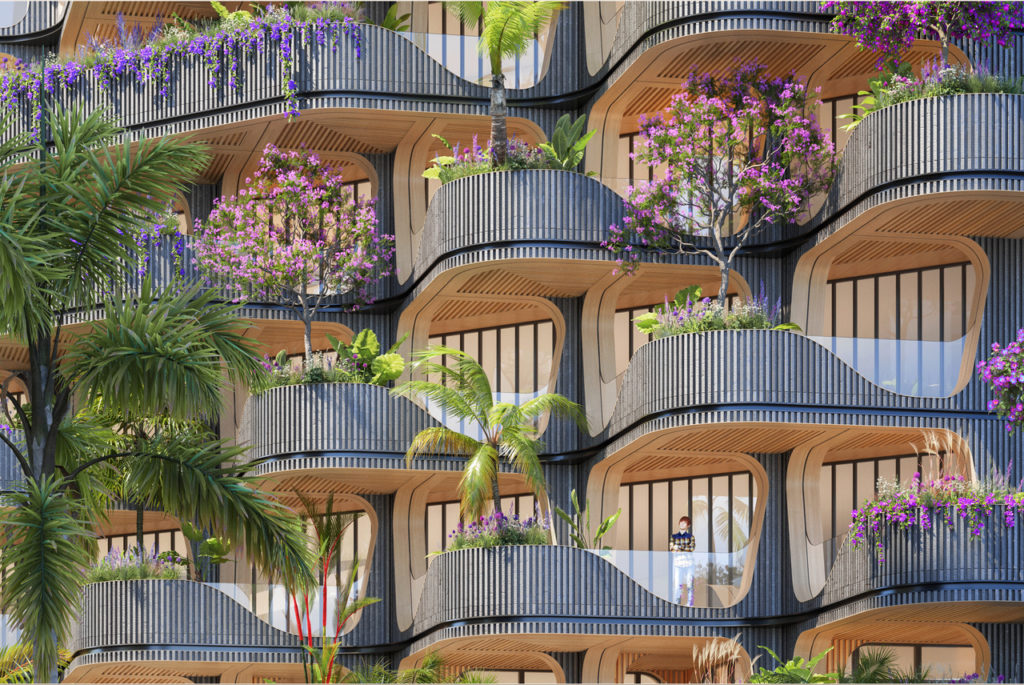
The Rainbow Tree has sinusoidal balconies staggered between the even and odd floors allowing palm trees and deciduous trees to grow on a double height. The endemic plant species are listed according to the color of their flowering – pink, purple, green, yellow, orange, red – to draw 5 plant spirals wrapping around the solid wood facades.
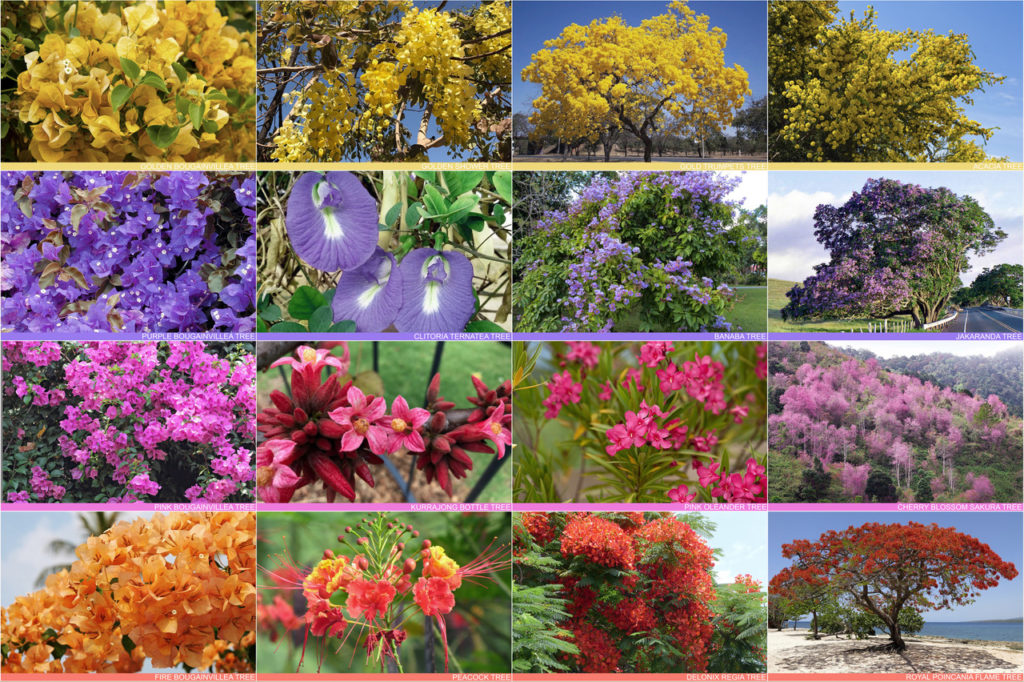
This urban forest makes it possible to fight against the effects of urban heat and constitutes a true island of freshness by the evapotranspiration of plants bioclimatizing naturally the public space.
In addition, the 30,000 plants, shrubs, and trees planted on the tower will capture 150 tons of CO2 in the atmosphere of the Cebu City annually to transform them into oxygen through natural photosynthesis. The tower, which is already low in intrinsic carbon thanks to its bio-based construction materials, will also be breathable and depolluting during its operation.
A PASSIVE CONSTRUCTION INTEGRATING URBAN AGRICULTURE AND RENEWABLE ENERGIES
After choosing the mass timber construction to drastically reduce the carbon footprint of the project during its construction, the efforts have focused on the integration of passive systems and renewable energies to reduce its carbon footprint during its operation.
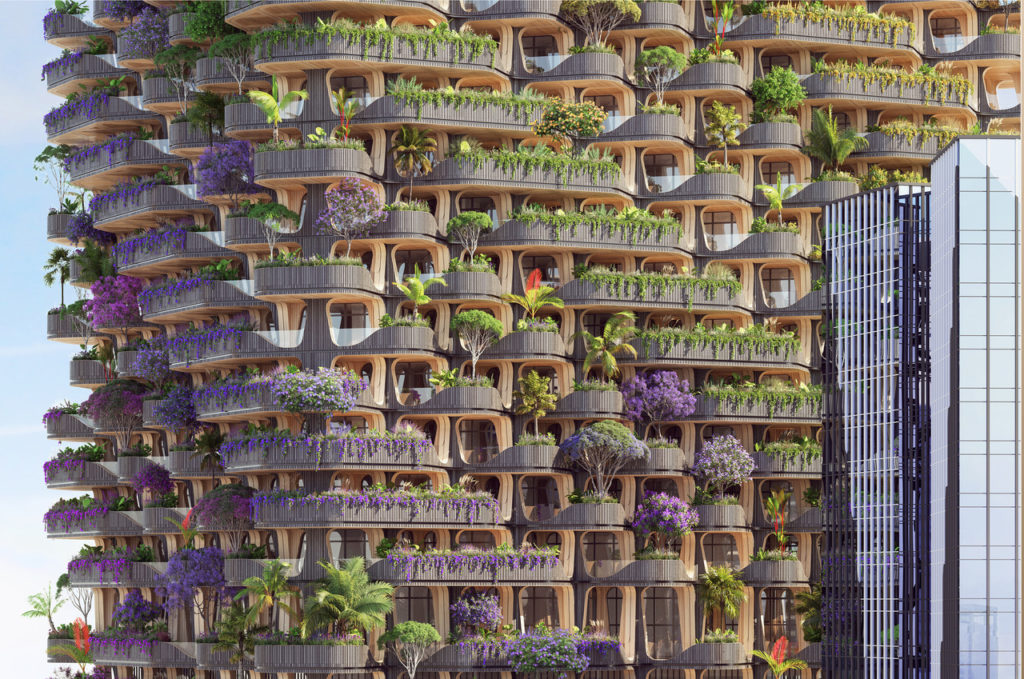
First of all, the tower benefits from double insulation – interior and exterior – and from natural materials such as thatch, hemp, and cellulose wadding. In addition, the plant cover makes it possible to control the solar gains and take advantage of the evapotranspiration of the plants to cool the temperature felt on the balconies by 2 to 5 degrees.
To ensure natural ventilation in each apartment, wind chimneys cross the central core over its entire height. These chimneys draw outdoor air at an average of 29 degrees annually from the urban forest on the ground floor. This hot air passes under the earthquake-resistant foundations where the thermal inertia of the earth is constant all year round at 18 degrees. This naturally refreshed 22-degree air then forced into the apartments as in a termite hill.

In addition to the vegetable tubs planted on the balconies of the apartments, an urban aquaponic farm is spread over the last three levels of the Rainbow Tree. Aquaponics is a technique of sustainable and virtuousagriculture that combines fish farming and plant cultivation and allows you to experience the countryside in the city by removing social ties.
The Sky Farm produces 25,000 kilos of fruit, vegetables, and algae and 2,500 kilos of fish per year, or almost 2 kilos of food per week for each family residing in the tower.
These foods are grown with water saving of 90%, without chemical fertilizers, pesticides, or GMOs, but from natural fertilizers. In fact, fish excrement nourishes the plants with nitrates. This absorption then filters the water. The purified water finally returns to the fish pond: the cycle can start again. It is nothing less than a recreated natural mini-ecosystem, where the waste of one element becomes the food of another element. A “living market” will allow Cebuanos residents to not only buy farm products but also to eat them on the spot in a cozy atmosphere.
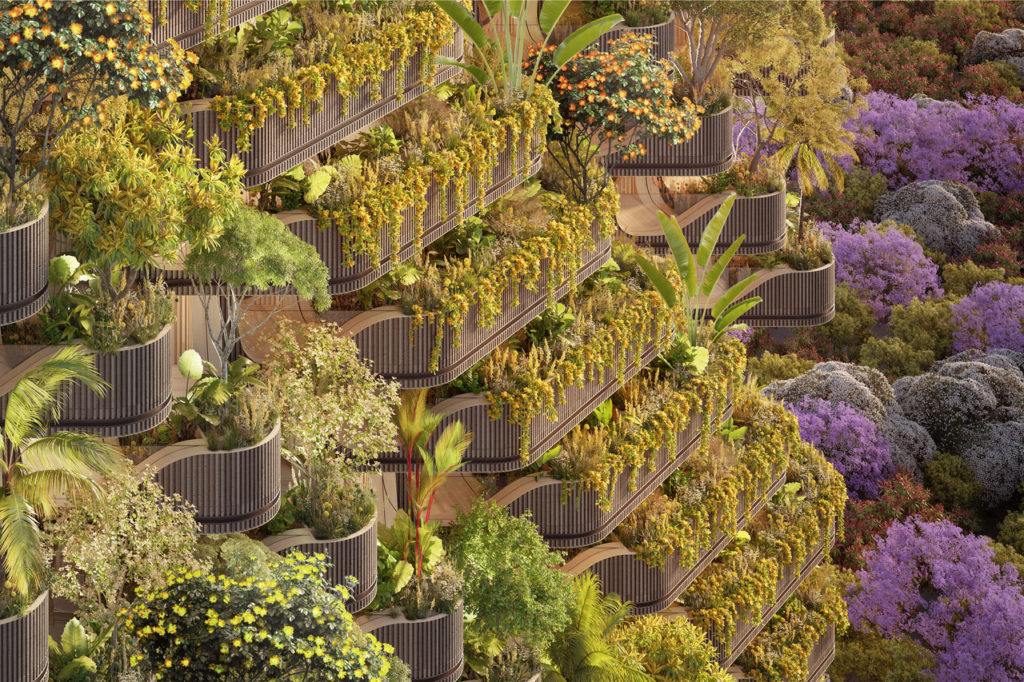
The greenhouse, which is naturally lit all year round, benefits from a low-consumption LED light complement which reproduces the light spectrum of the sun in order to recreate the ideal conditions for photosynthesis.
This urban farm is covered with a solar canopy producing electricity stored in hydrogen fuel cells and domestic hot water redistributed in a virtuous loop in the bathrooms and kitchens of the apartments.
To top it all off, a farm of 16 axial wind turbines with magnetic levitation also generates electricity in situ without any noise pollution.
By 2050, 80% of the world’s population will live in cities. It is now necessary to produce as close as possible to the consumer-actors and consume the minimum of resources while reducing wastes and greenhouse gas emissions. Within the framework of the new circular economy, the Rainbow Tree is a prototype of a completely biobased vertical forest respecting the four pillars of the ecological city of the future, namely: energy self-sufficiency (heating, cooling, and electricity); greening of buildings and development of urban agriculture; soft mobility centered on pedestrians, bikes and electric co-mobility; social innovation through spaces for sharing between residents and solidarity services.